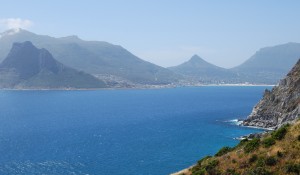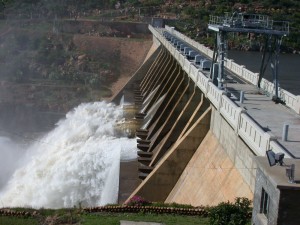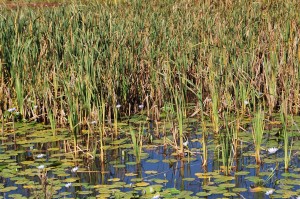CHAPTER < FIVE CONTD...
Water Stress
Water permeates every aspect of our lives, every minute of every day, from our wake-up cup of coffee first thing in the morning until we brush our teeth last thing at night. It is such an integral part of life that to be without it can cause enormous psychological stress for the individual person.
 From a wider perspective civilisation as we know it is built on the premise that access to water is a given: a given with which to keep body and soul together, ensure cleanliness, enjoy leisure time, irrigate crops, water livestock, lubricate industry, assist technology, transport goods and mix with cement to build and build and build.
From a wider perspective civilisation as we know it is built on the premise that access to water is a given: a given with which to keep body and soul together, ensure cleanliness, enjoy leisure time, irrigate crops, water livestock, lubricate industry, assist technology, transport goods and mix with cement to build and build and build.
The growth and development of the Economic Era would not have been possible without an abundance of water and our housewives, farmers, captains of industry, scientists, engineers and builders used it abundantly and often carelessly. With the result that humanity now utilises over one-half of all total accessible freshwater. This premise of water abundance has not followed us into the new century. As water shortages increasingly become a reality associated with global warming and population density in many parts of the world, water economy has replaced water extravagance as a new philosophy. This paradigm shift is not a moment too soon if we are to avoid facing a thirsty future.
 Ours is a blue planet with nearly three-quarters of the Earth’s surface covered by water held in deep ocean basins. But being salty, this water is unusable for our direct needs and so we have to rely on the tiny fraction of freshwater found in rivers, streams, lakes, dams and underground aquifers for our immediate consumption. This available water is less than one-half of one per cent of all the water on Earth.
Ours is a blue planet with nearly three-quarters of the Earth’s surface covered by water held in deep ocean basins. But being salty, this water is unusable for our direct needs and so we have to rely on the tiny fraction of freshwater found in rivers, streams, lakes, dams and underground aquifers for our immediate consumption. This available water is less than one-half of one per cent of all the water on Earth.
The amount of water accessible for human use is estimated to be in the region of 12 600 cubic kilometres in total, renewable only by rainfall at an average annual rate of 800 millimetres per annum. But like the distribution of arable land around the globe, its availability is uneven, with some countries enjoying water surplus whilst others suffer water scarcity. Latin America, the United States and Canada are among the most water rich regions of the world whilst the Middle East, Africa and South Asia are the regions most water-strapped.
 Considering the importance of fresh water to the sustainability of life for billions of people around the planet, it would be logical for us to safeguard this essential resource with all the care that we are capable of. This is sadly not so in the real world where we have polluted essential water supplies with the negligence of people with a death wish. Certainly there can be no life on Earth without water, and yet reckless disregard is rendering much of the little that we have unusable for essential applications. Raw sewage, eroded soil, industrial poisons, acid emissions, heavy metals, pesticides, herbicides, insecticides, fungicides, fertilisers, nitrates, solvents; the list of pollutants goes on and on, rendering water reserves unsafe and even lethal for Man, beast, fish and fowl in many parts of the globe.
Considering the importance of fresh water to the sustainability of life for billions of people around the planet, it would be logical for us to safeguard this essential resource with all the care that we are capable of. This is sadly not so in the real world where we have polluted essential water supplies with the negligence of people with a death wish. Certainly there can be no life on Earth without water, and yet reckless disregard is rendering much of the little that we have unusable for essential applications. Raw sewage, eroded soil, industrial poisons, acid emissions, heavy metals, pesticides, herbicides, insecticides, fungicides, fertilisers, nitrates, solvents; the list of pollutants goes on and on, rendering water reserves unsafe and even lethal for Man, beast, fish and fowl in many parts of the globe.
Major river systems around the world are being contaminated at an alarming rate. The Ganges River in India, for instance, has over a million litres of raw sewage dumped into it every minute of every day, and the Yangtze River is being polluted with millions of litres of industrial and raw sewage per day. However Homo sapiens sapiens is not the only species to pay the price for widespread water pollution. In the United States, chemical wastes are being dumped into thousands of surface pits, ponds and lagoons with many species of freshwater fish, crayfish, amphibians and freshwater mussels becoming extinct or verging on extinction. In northern Sweden and Norway thousands of lakes can no longer support fish and Lake Victoria, which straddles Kenya, Uganda and Tanzania, has lost hundreds of species of fish within past decades.
For the more than 1000 million people around the world who have no access to a safe water supply for drinking or basic sanitation, water represents a painful paradox. It is the liquid of life, without which they would certainly die, and yet to drink or bathe in contaminated water could also be a death sentence. It is a lose-lose situation in which millions of people have already lost their lives. For multitudes of people around the world, unclean water is a major cause of disease and death with diarrhoea, amoebic dysentery, cholera, infectious hepatitis, typhoid, malaria, yellow fever and bilharzia causing untold misery. Waterborne parasitic diseases are also spread by irrigation farming and even the practices of water management make it a substance to be avoided unless absolutely necessary in many parts of the globe.
 Apart from being environmentally destructive, hydroelectric dams, which have proliferated in 50 years from 5000 worldwide in 1950 to over 38 000 today, alter the ecology of the local environment. This increases the incidence of disease in surrounding areas; as has been shown by studies carried out on the Aswan High Dam in Egypt, the Sennar Dam in Sudan and the Akosombo Dam in Ghana. Debilitating diseases such as Rift Valley Fever, malaria and sleeping sickness have been associated with hydroelectric power projects in some parts of the globe and so it seems that yet again, modern technology is a double-edged sword, especially for the people who live in the vicinity of these massive water schemes.
Apart from being environmentally destructive, hydroelectric dams, which have proliferated in 50 years from 5000 worldwide in 1950 to over 38 000 today, alter the ecology of the local environment. This increases the incidence of disease in surrounding areas; as has been shown by studies carried out on the Aswan High Dam in Egypt, the Sennar Dam in Sudan and the Akosombo Dam in Ghana. Debilitating diseases such as Rift Valley Fever, malaria and sleeping sickness have been associated with hydroelectric power projects in some parts of the globe and so it seems that yet again, modern technology is a double-edged sword, especially for the people who live in the vicinity of these massive water schemes.
With the world’s population increasing at a rapid rate, demand for water is escalating steeply every year with global needs doubling every 21 years. Already one billion people are living with the problems attendant to water scarcity. It is a finite resource that is running dry. By 2025 it is believed that two-thirds of the global population will be severely affected by water shortages causing immense water stress.
 Already as water tables are falling, underground aquifers are being pumped dry, lakes and dams are dwindling, and wetlands are drying up around the world, many countries do not have sufficient renewable water supplies. And many of the most water-scarce regions of the planet also have the highest population growths. As the social, political and economic impacts of water scarcity become a destabilising factor in many parts of the globe, the 21st Century could well be a period marked by water wars; deadly conflicts fought over one of our most precious natural resources.
Already as water tables are falling, underground aquifers are being pumped dry, lakes and dams are dwindling, and wetlands are drying up around the world, many countries do not have sufficient renewable water supplies. And many of the most water-scarce regions of the planet also have the highest population growths. As the social, political and economic impacts of water scarcity become a destabilising factor in many parts of the globe, the 21st Century could well be a period marked by water wars; deadly conflicts fought over one of our most precious natural resources.
No living creature on Earth, least of all human beings, can live without fresh water. Therefore it is essential that we re-evaluate our relationship with the little that we have, now, before it is too late and this precious gift from God dries up in some parts of the world or becomes so polluted in other parts that it is unusable to every species. The results of such a catastrophic scenario would have a global impact on all of humanity, as well as every other creature that shares the planet with us. Stewardship of this vital resource is in our hands. How we safeguard it is up to us. Let’s hope that we are equal to the magnitude of this responsibility…